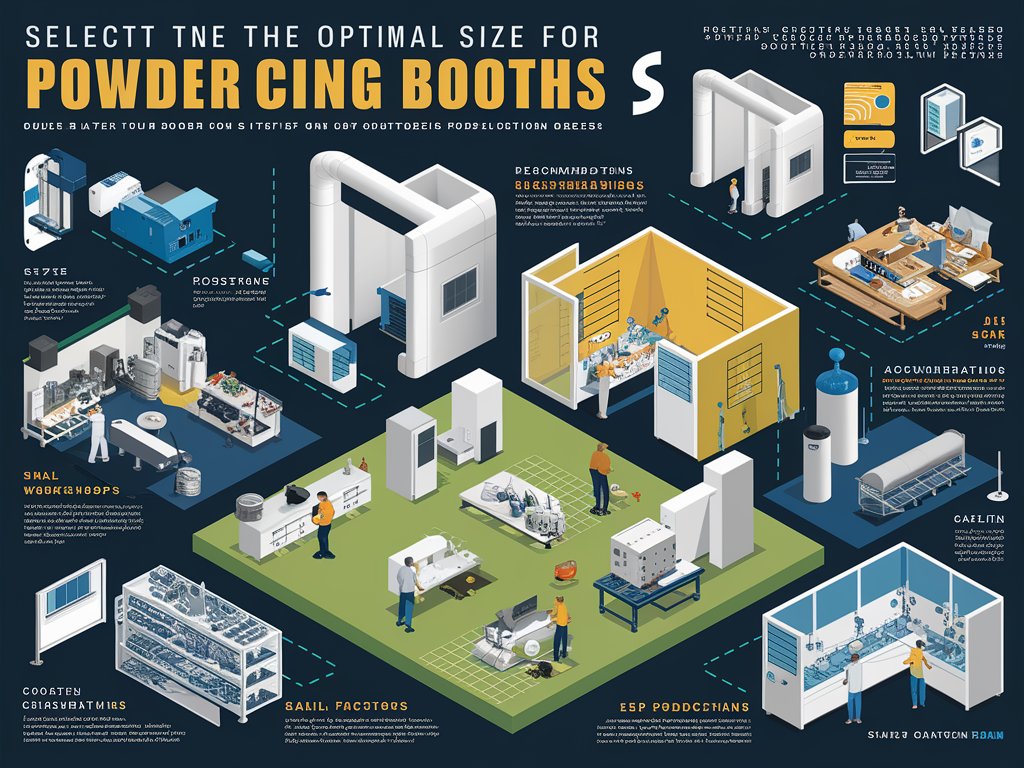When it comes to optimizing your production facility, selecting the right size for your powder coating booths is a crucial decision that can significantly influence operational efficiency and cost-effectiveness.
This detailed guide will walk you through the key considerations to keep in mind while determining the ideal booth size for your specific needs. We’ll cover everything from assessing production requirements and available space to considering future scalability and consulting with industry experts. Let’s dive in and find the perfect fit for your facility.
Assessing Production Needs and Throughput Requirements
First and foremost, understanding your production demands is vital. How much volume do you expect to handle? Are your projects typically large or small? These questions are fundamental as they directly impact the size and type of powder coating booths required. For high-volume production environments, larger booths or multiple paint spray booths might be necessary to handle the workload efficiently without bottlenecks. Each project’s specifics, such as dimensions and turnaround time, must also be considered to maintain a smooth workflow.
Evaluating Available Space and Facility Constraints
Now, let’s talk about the space you have. Before you can decide on the size of your blast booths, you need to evaluate the physical area of your facility. Is space at a premium, or do you have room to grow? The layout of your facility will influence the type of booth you can accommodate—whether it’s a more compact, vertical setup or a sprawling, horizontal one. It’s essential to ensure that there’s enough room for not only the booth but also for safe and efficient operation around the booth area.
Considering Future Expansion and Scalability
Thinking ahead is key in business. As you look at the present requirements, it’s wise to also consider future growth. Will your production demands increase? If so, opting for scalable solutions in your powder coating booth setup can save you significant time and money down the line. This might mean choosing modular booths that can be expanded or reconfigured as your business grows and evolves.
Understanding Equipment Compatibility and Integration
Compatibility is another critical factor. Your new powder coating booth should seamlessly integrate with existing systems. This involves considering the technical specifications of the booth relative to your current machinery, such as conveyor belts or automated spray systems. Ensuring that all components of your production line communicate effectively with one another is essential for maintaining operational harmony and maximizing throughput.
Analyzing Budgetary Considerations and Cost Efficiency
Budgeting cannot be overlooked. While it’s tempting to go for the largest or most technologically advanced booth, it’s important to balance your needs with what you can afford. Cost-efficiency doesn’t just come from purchasing the booth but also from its long-term operation and maintenance costs. Consider energy consumption, filtration systems, and maintenance access when choosing your booth size and features, as these can significantly affect overall expenses.
Consulting with Manufacturers for Guidance
Lastly, don’t go at it alone. Consulting with manufacturers can provide invaluable insights into the latest technologies and trends in powder coating booths. These professionals can offer tailored advice based on your specific production needs, available space, and budget. Taking the time to discuss your options with experienced professionals can lead to better decision-making and a more optimized production environment.
By carefully considering these aspects, you can choose the best size for your powder coating booths that not only meets your current needs but also accommodates future growth. Remember, the right investment in your infrastructure is pivotal to enhancing your operational efficiency and ultimately, your bottom line.



